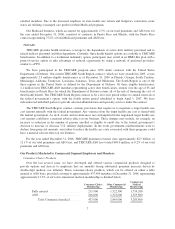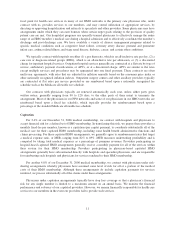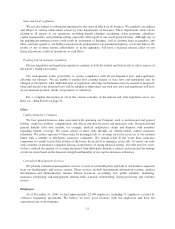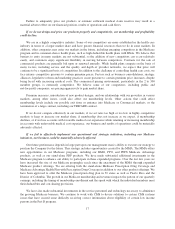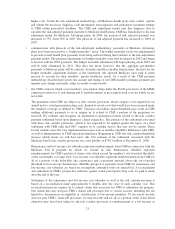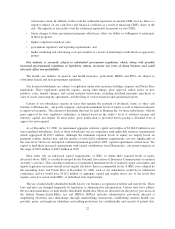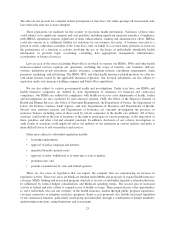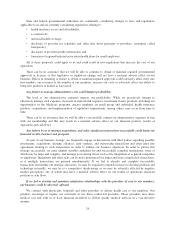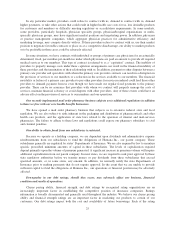Humana 2006 Annual Report Download - page 28
Download and view the complete annual report
Please find page 28 of the 2006 Humana annual report below. You can navigate through the pages in the report by either clicking on the pages listed below, or by using the keyword search tool below to find specific information within the annual report.ITEM 1A. RISK FACTORS
This document includes both historical and forward-looking statements. The forward-looking statements are
made within the meaning of Section 27A of the Securities Act of 1933 and Section 21E of the Securities
Exchange Act of 1934. We intend such forward-looking statements to be covered by the safe harbor provisions
for forward-looking statements contained in the Private Securities Litigation Reform Act of 1995, and we are
including this statement for purposes of complying with these safe harbor provisions. We have based these
forward-looking statements on our current expectations and projections about future events, trends and
uncertainties. These forward-looking statements are not guarantees of future performance and are subject to risks,
uncertainties and assumptions, including, among other things, the information discussed below. In making these
statements, we are not undertaking to address or update each factor in future filings or communications regarding
our business or results. Our business is highly complicated, regulated and competitive with many different
factors affecting results.
If the premiums we charge are insufficient to cover the cost of health care services delivered to our
members, or if our estimates of medical claim reserves based upon our estimates of future medical claims are
inadequate, our profitability could decline.
We use a significant portion of our revenues to pay the costs of health care services delivered to our
members. These costs include claims payments, capitation payments, and various other costs incurred to provide
health insurance coverage to our members. These costs also include estimates of future payments to hospitals and
others for medical care provided to our members. Generally, premiums in the health care business are fixed for
one-year periods. Accordingly, costs we incur in excess of our medical cost projections generally are not
recovered in the contract year through higher premiums. We estimate the costs of our future medical claims and
other expenses using actuarial methods and assumptions based upon claim payment patterns, medical inflation,
historical developments, including claim inventory levels and claim receipt patterns, and other relevant factors.
We also record medical claims reserves for future payments. We continually review estimates of future payments
relating to medical claims costs for services incurred in the current and prior periods and make necessary
adjustments to our reserves. However, many factors may and often do cause actual health care costs to exceed
what was estimated and used to set our premiums. These factors may include:
• increased use of medical facilities and services, including prescription drugs;
• increased cost of such services;
• our membership mix;
• variances in actual versus estimated levels of cost associated with new products, benefits or lines of
business, product changes or benefit level changes;
• membership in markets lacking adequate provider networks;
• changes in the demographic characteristics of an account or market;
• termination of capitation arrangements resulting in the transfer of membership to fee-for-service
arrangements;
• changes or reductions of our utilization management functions such as preauthorization of services,
concurrent review or requirements for physician referrals;
• possible changes in our pharmacy rebate program with drug manufacturers;
• catastrophes, including acts of terrorism, public health epidemics, or severe weather (e.g. hurricanes,
earthquakes, etc.);
• the introduction of new or costly treatments, including new technologies;
• medical cost inflation; and
• government mandated benefits or other regulatory changes.
16



